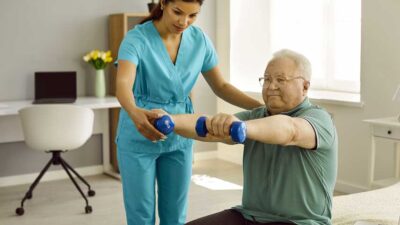Choosing the right footwear is important beyond matters of mere style. With slips, trips, and falls being among the most common injuries experienced by people, housing your feet in a pair of shoes that offer adequate support, comfort, and stability is essential for maintaining your balance, mobility, and overall health and well-being.
According to data from Amerisafe, an estimated 96,000 foot and ankle injuries result in lost workdays, each year, with an average worker’s compensation claim of over $15,000 in medical costs for foot injuries. Sprains and strains are also the most common injuries encountered by people in sports, while unintentional falls continue to be the leading cause of nonfatal injury across all ages in the U.S.
To minimize the risk of incurring such injuries, your choice of footwear cannot be underestimated. In this article, we will look at some of the factors to consider when selecting the right footwear to ensure both your safety and comfort.
Know Your Foot Type
People have different foot shapes which vary between pronated, supinated, or neutral feet so it’s important to choose shoes that are appropriate for your foot type.
- Pronation: If you have pronated feet, the soles of your feet will be flat or have very little arch, causing more stress to be placed on the inner portion of your foot and ankle. Shoes that provide good arch support and stability can control overpronation and help you maintain proper alignment during walking or running.
- Supination: Supinated feet have a high arch, placing more stress on the outer portion of the foot and ankle. Shoes that provide flexibility and ample cushioning for the feet allowing them to move naturally, are recommended.
- Neutral: Neutral feet have a balanced arch and offer adequate support when standing. Shoes that fit comfortably without being overly tight are important to prevent your feet from sliding around inside the shoe, causing instability and discomfort.
Shoes that provide the right balance between support, comfort, and fit can help to reduce the risk of injuries and enhance your overall walking or running experience.
Slip Resistance
Over time, the soles of your shoes will provide less traction and grip increasing the chance of a slip or fall. To ensure your safety, it is important to regularly inspect your footwear to make sure it is providing adequate slip resistance. Choosing footwear with a suitable tread pattern or slip rating is essential for activities like running to minimize the risk of injury.
Shoes with slip-resistant soles provide better traction on wet or uneven surfaces, reducing the risk of slips and falls, especially in adverse weather conditions, and can also enhance pedestrian safety on uneven surfaces. If you have been injured as a pedestrian, this Lawyer handling pedestrian injuries in Las Vegas can provide valuable assistance, guiding you through the legal process if needed.
Comfort
To reduce the stress on your muscles and ligaments choose comfortable and supportive footwear to reduce pain, fatigue, and the risk of injuries or falls. Your shoes should offer:
- Good cushioning: To absorb shock and impact
- Stability: A stable midfoot and firm heel will hold your foot in place
- Flexibility: This is needed when taking off and can prevent problems like Plantar Fasciitis
By following this guide, you can prioritize both the comfort and safety of your feet.







 This article changed my life!
This article changed my life! This article was informative.
This article was informative. I have a medical question.
I have a medical question.
 This article contains incorrect information.
This article contains incorrect information. This article doesn’t have the information I’m looking for.
This article doesn’t have the information I’m looking for.